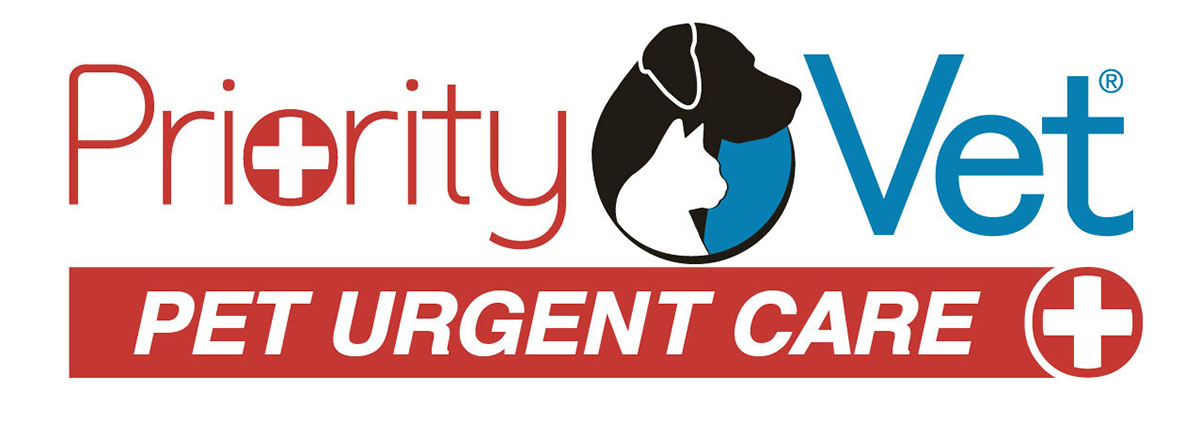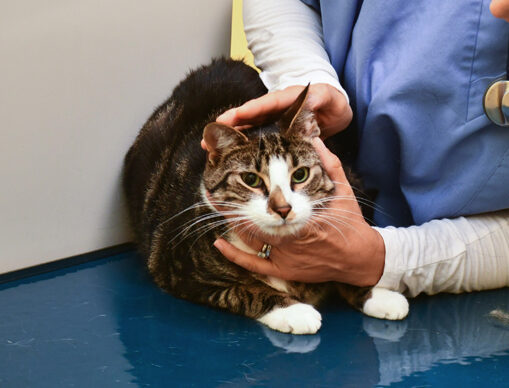If your cat is experiencing breathing difficulty or sudden inability to walk, seek veterinary attention immediately.
Background
Heart disease in cats is very different from that in dogs. Cats typically suffer from heart muscle disease (cardiomyopathy). Dogs more often have valvular disease. In many cats, no changes in the heart sounds or rhythm may ever be detected until the disease has become severe, and once severe it is difficult to treat. Dogs usually have a heart murmur in the early stages of disease and early symptoms, such as cough, enable early steps to be taken to slow progression and limit severity.
Types of Feline Cardiomyopathy
Hypertrophic Cardiomyopathy (HCM) is the most common heart disease in cats today. The most commonly affected breed is the “domestic shorthair” cat. A genetic link has been demonstrated in Maine Coon and Ragdoll cats. HCM is a disease of the heart muscle that results, in most cases, in an abnormal thickening of the muscle walls. This results in altered contraction and relaxation of the heart as it pumps blood.
Dilated Cardiomyopathy (DCM), Restrictive Cardiomyopathy (RCM) and Unclassified Cardiomyopathy (UCM) are less common heart diseases of cats. DCM is typically caused by a deficiency in Taurine in cats fed a diet deficient in this amino acid. As the name suggests, it causes dilation rather than thickening of the heart. No cause for RCM or UCM has been elucidated.
All forms of the disease may ultimately result in a backup of blood as it tries to circulate through the heart, lungs and rest of the body. As the blood backs up, fluid is forced into the lungs and chest cavity causing congestive heart failure (CHF). Unfortunately, all forms can result in sudden, unexplained breathing difficulty and death or blood clots that block blood flow to the back legs, leading to paralysis, severe pain, and eventually death.
Symptoms
To some degree, the symptoms depend on the severity – mild disease doesn’t cause obvious problems, but severe disease often does. Unfortunately, cats are masters at masking problems until they become severe. Cats may appear completely normal or have only subtle signs that go unnoticed or nonspecific signs, such as lethargy or decreased appetite. On the other hand, the first signs can be quite obvious, such as the sudden onset of respiratory distress or leg paralysis.
Diagnosis
A heart murmur, gallop rhythm (extra heart sound) or arrhythmia may be heard on a routine exam, but not always. Electrocardiograms and radiographs provide useful information but cannot be used alone to diagnose the disease. An echocardiogram (ultrasound of the heart) offers the best means to diagnose feline cardiomyopathy. Echocardiography allows a veterinarian to observe the physical structure and dynamic function of the heart. Very subtle structural and functional changes can occur within the heart in the early stages. These changes correlate with the risk of developing congestive heart failure. Often, a veterinary cardiologist is consulted for definitive diagnosis and management of feline heart disease.
Treatment
There is no cure or specific treatment for cardiomyopathy. However, if it is due to another disease, such as hyperthyroidism or taurine deficiency, treatment of the underlying condition can result in partial or complete resolution. In other cases, medications can be used to control some of the symptoms or prevent complications of the disease.
Urgent Care
A cat that is having difficulty breathing or has loss of function of limbs, requires veterinary care immediately. These problems require oxygen therapy and injectable treatment that can only be provided at a veterinary hospital.
Prognosis
A cat diagnosed early with mild disease may enjoy an essentially normal life for a number of years. The prognosis is much worse once a cat has more severe disease. Unfortunately, the prognosis for a cat with heart failure is poor and some cats die very suddenly even though they never had symptoms of heart disease. On average, survival for cats with primary cardiomyopathy and heart failure is 12 to 18 months after diagnosis. With supportive care, about 40 to 50% of patients will break down blood clots on their own and regain limb function over time. However, these often recur over the following weeks to months.
Prevention
• Have your cat examined by a veterinarian at least yearly.
• Feed your cat a well-balanced cat food that contains Taurine.
• Have your cats’ Thyroid hormone blood level checked at the first sign of symptoms and yearly as part of geriatric screening.
• Ask your veterinarian to investigate any abnormal heart sounds or rhythms or bloodwork abnormalities in your cat.
• Follow recommendations for early advanced diagnostics and treatment.
• Seek veterinary attention for your cat at the first signs of changes in behavior, drinking or urination, appetite, breathing or walking.
• Know where to bring your cat in the case of an after-hours emergency.

